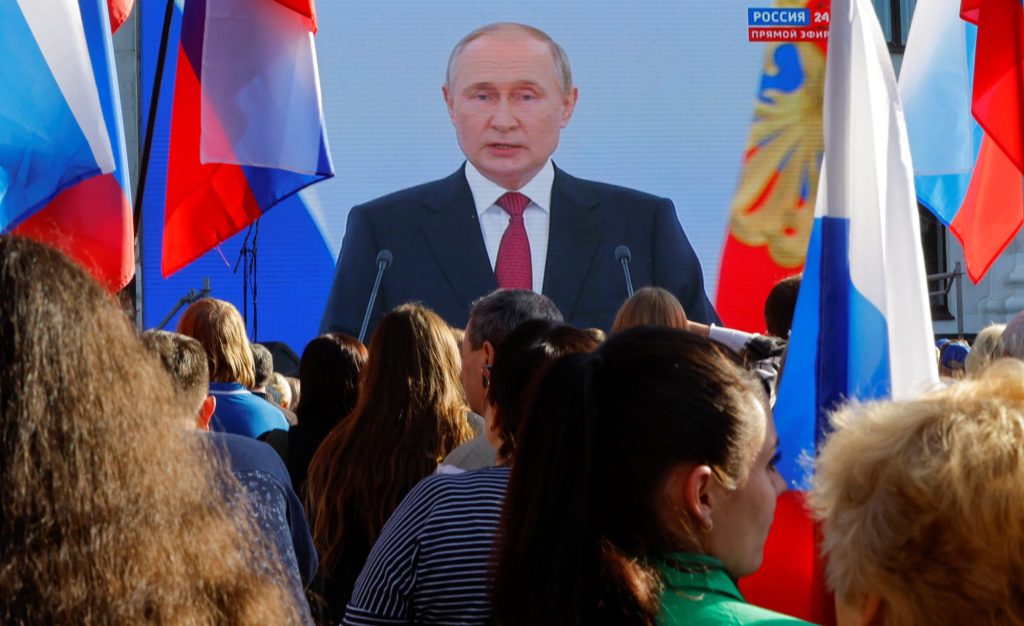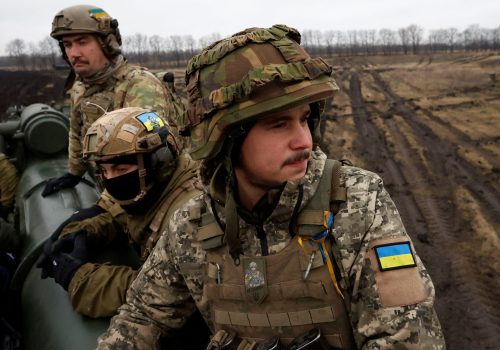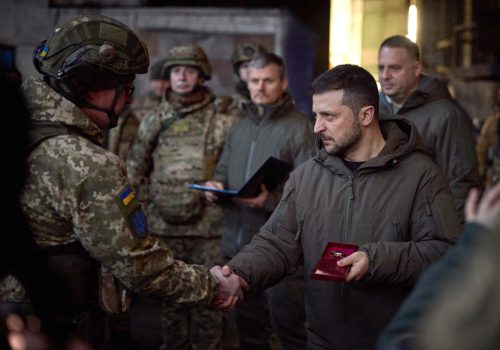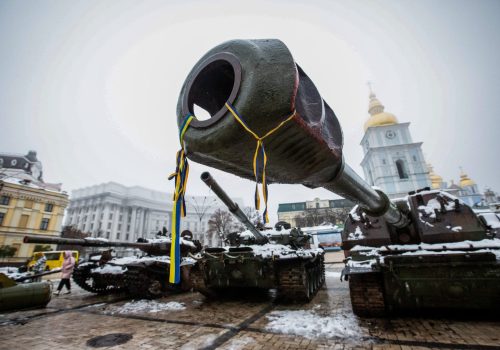As the Russian attack on Ukraine approaches the one-year mark, it is increasingly clear that Vladimir Putin’s decision to invade was one of the biggest geopolitical blunders of the modern era. The Russian dictator initially expected a short and victorious war. Instead, Putin’s faltering invasion has transformed him into an international pariah and shattered Russia’s reputation as a military superpower. How could he have got it so wrong?
The scale of the miscalculations that led to the invasion was laid bare in a recent New York Times article entitled: “How Putin’s war in Ukraine became a catastrophe for Russia.” This lengthy report featured details of the often wildly unrealistic objectives set for the invading Russian army, with specific units expected to advance hundreds of kilometers through hostile country and occupy towns deep inside Ukraine within a matter of days.
The orders handed out on the eve of the invasion confirm that Russian military planners dangerously underestimated Ukraine’s ability to fight back. At first glance, this makes little sense. By early 2022, Ukraine had already been at war with Russia for eight years and boasted a battle-hardened army of more than 200,000 personnel along with hundreds of thousands of highly motivated reservists with combat experience. This force was also relatively well-armed and led by an emerging generation of generals who had absorbed the lessons of the simmering conflict in eastern Ukraine.
And yet we now know from leaked and captured documents that Russia’s military and political elite anticipated only minimal organized resistance in Ukraine. Rather than preparing for a major war, they genuinely believed a large proportion of the Ukrainian population would greet them as liberators. Strikingly, they also doubted whether the country’s military had the stomach for a serious fight.
These absurd expectations were shaped by decades of misleading Kremlin propaganda. For generations, the Russian state has denied Ukraine’s right to exist and questioned the existence of a separate Ukrainian national identity. Putin has been a particularly prominent advocate of such arguments and has frequently claimed that Ukrainians are in fact Russians (“one people”). In the years between the 2014 occupation of Crimea and the full-scale invasion of February 2022, he repeatedly branded Ukraine an artificial country that had been unjustly separated from its rightful place as part of historical Russia.
Russian state propagandists have also long sought to discredit Ukraine’s post-Soviet transition toward Euro-Atlantic integration by dismissing it as a foreign plot. Rather than acknowledge the Ukrainian people’s right to determine their own future, the Kremlin has consistently insisted that the vast majority of Ukrainians see themselves as Russians but are victims of an extremist fringe acting in the interests of outsiders.
Such delusions seem to have penetrated the upper echelons of the Russian leadership. At no point in the lead-up to the war does anyone in the Kremlin appear to have taken the idea of Ukrainian agency seriously. Instead, they assumed the 2022 invasion would be a repeat of the spring 2014 takeover of Crimea, which saw Russian troops rapidly seize the Ukrainian peninsula amid post-revolutionary political paralysis in Kyiv. This was to prove an extremely costly mistake.
From the very first hours of the invasion, Russian troops ran into fierce Ukrainian resistance and began suffering heavy losses. Just over a month after the first columns of Russian tanks had crossed the border, Putin was forced to admit defeat in the Battle of Kyiv and withdraw from northern Ukraine entirely. His army has yet to regain the initiative, and has since retreated from Kharkiv region in eastern Ukraine and Right Bank Kherson in the south.
Stay updated
As the world watches the Russian invasion of Ukraine unfold, UkraineAlert delivers the best Atlantic Council expert insight and analysis on Ukraine twice a week directly to your inbox.
As well as fatally underestimating Ukraine’s military capabilities, Putin also wildly overestimated the strength of his own army. Like many senior figures in Moscow, he took Russia’s military superpower status for granted and did not seriously consider the possibility of defeat at the hands of a minor state such as Ukraine. This confidence was shared by most Russians, who have traditionally embraced notions of their country’s military might with the zeal of religious dogma.
Despite a series of embarrassing setbacks in Ukraine, large numbers of Russians remain in denial and cling to the hope that Russia has yet to deploy its full military potential. Putin himself has fueled such wishful thinking by declaring that he has “not yet begun” to wage a real war in Ukraine. However, this bravado cannot disguise the significantly less imposing reality of a depleted and demoralized Russian army that is increasingly dependent on mobilized troops, outdated armor, and Iranian drones.
Putin has recently adopted a somewhat strange war strategy that appears primarily designed to appease domestic audiences. Since early October, Russia has been focusing on the mass aerial bombardment of Ukrainian cities and civilian infrastructure. This air war is hugely expensive and offers minimal military advantages. However, it is psychologically effective in convincing Russian audiences that their cause is not yet lost.
The Kremlin’s carefully curated propaganda machine works hard to amplify the impact of these airstrikes while exaggerating the hardships experienced by the Ukrainian civilian population. Likewise, state media also trumpets every minor gain achieved by Russian troops on the ground in eastern Ukraine, even when these advances are measured in meters. This creates the impression that Russia has stopped trying to win the war and is merely attempting to demonstrate that it is not losing.
Eurasia Center events

The war is far from over, of course. In September 2022, Putin demonstrated his resolve by ordering Russia’s first mobilization since World War II. Many international observers expect him to mobilize a further 500,000 troops in the coming weeks. This massive increase in Russian military manpower is already reducing Ukraine’s ability to advance and could allow Moscow to regain the initiative in the months ahead.
At the same time, the damage to Russia’s reputation has already been done. Russia’s global standing has always relied heavily on international perceptions of the country as a major military power. This myth has now been ruthlessly exposed on the battlefields of Ukraine. Countries which had earlier felt obliged to remain on good terms with Russia now understandably feel they have little to fear, while those who previously saw Moscow as a powerful partner have been forced to rethink this relationship.
Domestically, the consequences may be even more critical for Putin. Belief in Russia’s military strength served as the foundation stone of the country’s modern national identity. It was a source of patriotic pride that helped justify the often harsh living conditions and limited individual rights that all Russian citizens are forced to accept. This entire facade is now in danger of collapsing.
The failing invasion of Ukraine is not only exposing the relative weakness of the Russian military; it is revealing the rot at the heart of the Russian state and the emptiness of the Kremlin’s imperial posturing. This raises a number of grave questions about the future of the Russian Federation that Putin is unable to answer. For the past 22 years, he has succeeded in creating a parallel propaganda universe, but reality is now rapidly closing in.
Victor Tregubov is a Ukrainian political activist and commentator.
Further reading
The views expressed in UkraineAlert are solely those of the authors and do not necessarily reflect the views of the Atlantic Council, its staff, or its supporters.

The Eurasia Center’s mission is to enhance transatlantic cooperation in promoting stability, democratic values and prosperity in Eurasia, from Eastern Europe and Turkey in the West to the Caucasus, Russia and Central Asia in the East.




